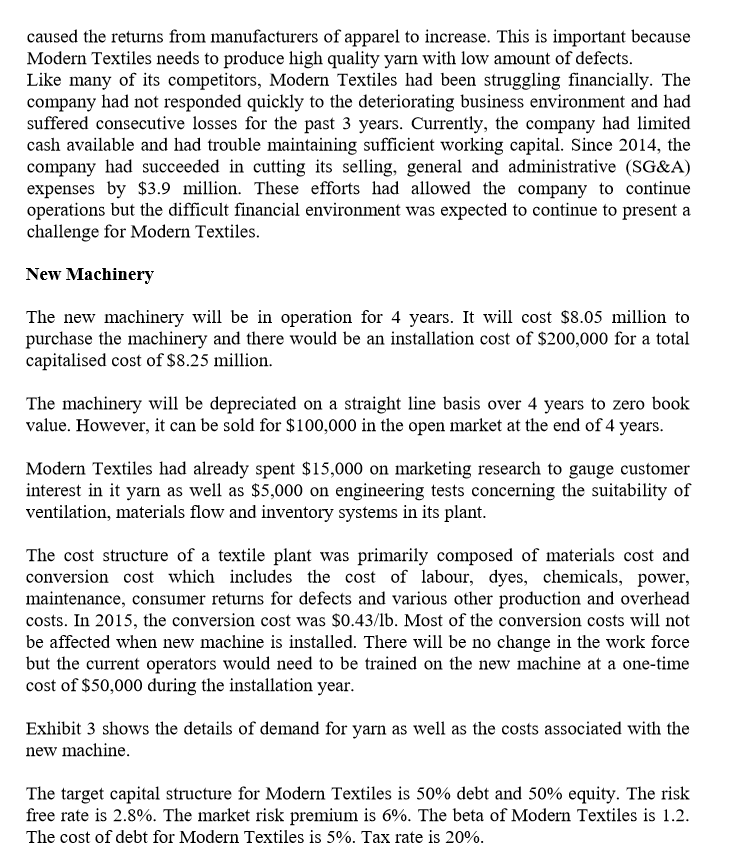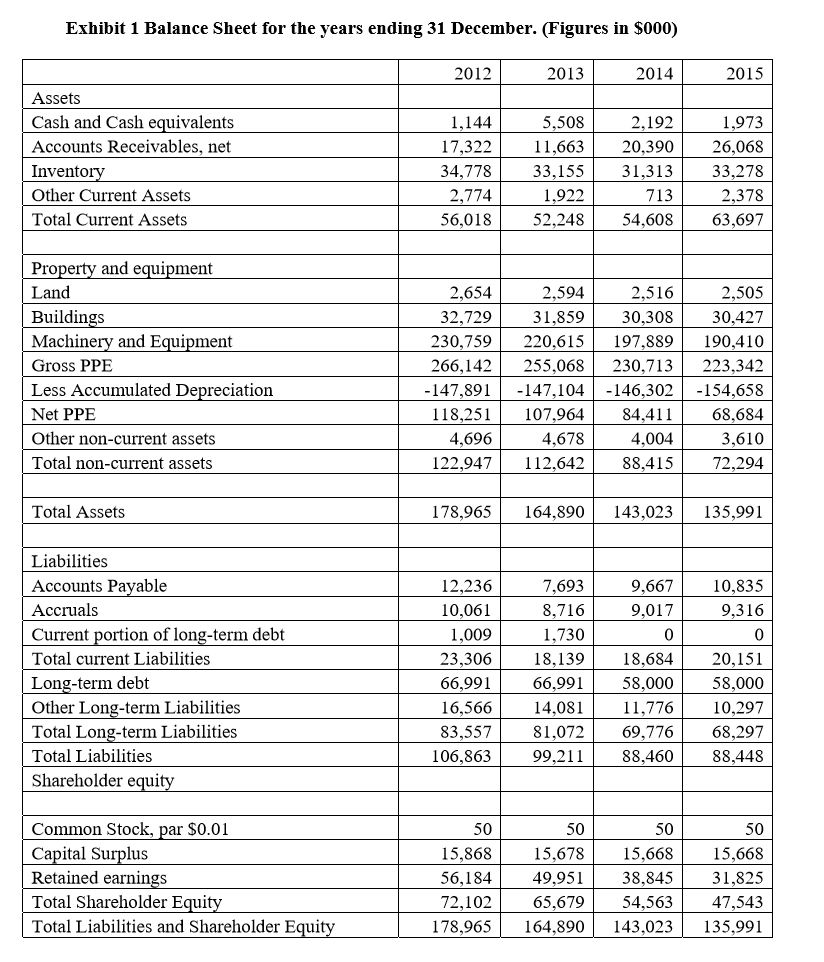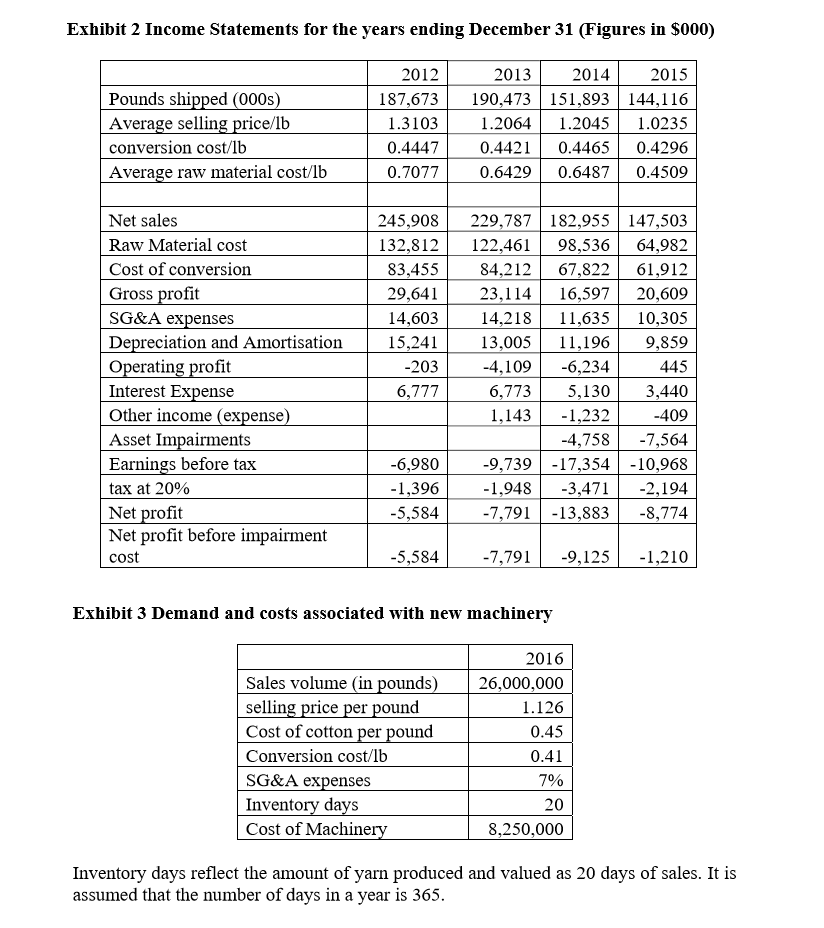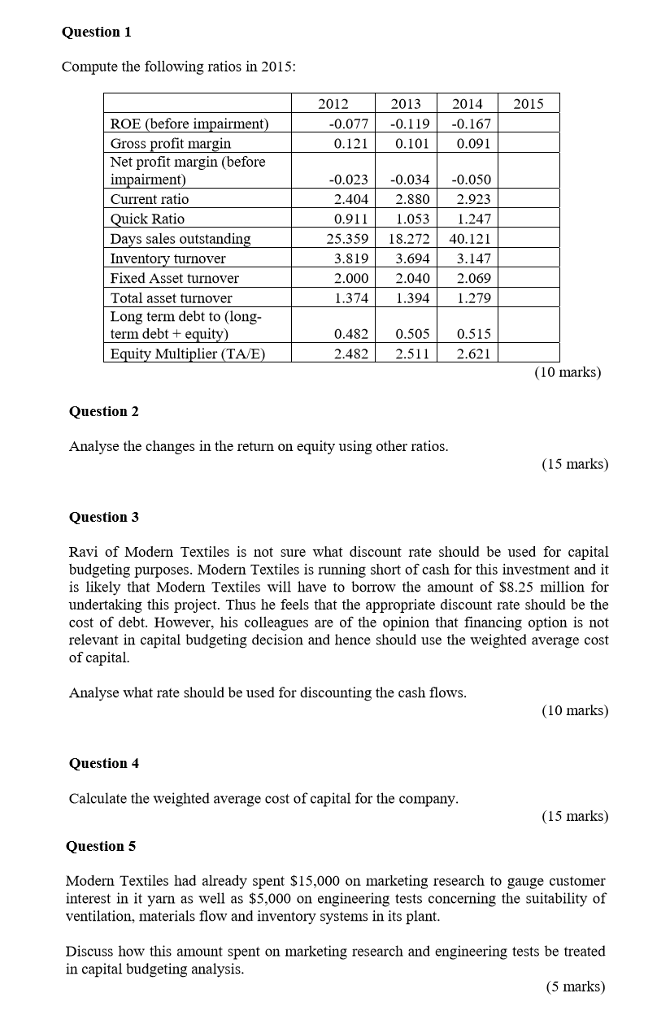Able to advise question 4 and 7 only? Thanks!






In January 2016, Ravi, the chief financial officer of Modern Textiles Company, located in Coimbatore India, was questioning whether the company should install a new ring spinning machine. The primary advantage of the new ring spinner is its ability to produce a finer-quality yarn that would be used for higher-quality and higher margin products. The finer quality yarn would be sold in a niche market that would command a 10% increase in the selling price of yarn which was currently $1.0235 a pound. In addition, the new machine would provide increased efficiency as well as greater reliability. The efficiency of the new machine would also reduce operating costs with lower power consumption and maintenance expenses. Sales volume, however, would be 5% lower than the current market and the cost of customer returns would be higher which made the decision a difficult one when combined with the $8.25 million installation cost The decision to invest in new technology was complicated because of the poor performance of Modern Textiles as well as the difficult circumstances facing the Textile Industry. Modern Textiles was, however, competing in select markets that were likely to survive foreign competition at a lower margin over the long run. Modern Textiles was a yarn manufacturer established in 1980. The finished products were cotton and synthetic/cotton blend yarns that were sold to a variety of apparel and industrial goods manufacturers. It served four major customer segments: hosiery knitted outerwear, wovens, and industrial and specialty products. The revenue break-up of Modern Textiles for various segments are Hosiery 43% 35% Knitted outerwear Wovens 113% 90% Industrial and Specialty Exhibits 1 and 2 show Modern Textiles' financial statements for 2012, 2013, 2014, and 2015. The steady decline in sales had led the management to close four manufacturing facilities in 2014 in an effort to match the capacity to the shrinking textile market and reduce manufacturing cost The textile market has been changing over time. While India had the advantage of major cotton producing and exporting country, competition from China, Vietnam and Indonesia has reduced the competitive advantage ofIndian textile industry Consumer preferences and fads also shaped the market. The emphasis in the industry had shifted from mass production to flexible manufacturing as textile mills aimed to supply customised markets. This change enabled apparel producers to bring goods to retailers and consumers in a short time frame. In general, consumer preferences had moved towards finer quality yarn with minimum defects Information technology also had downside risk for yarn producers as the apparel manufacturer can easily identify the yarn producer whose yarn was defective and this












